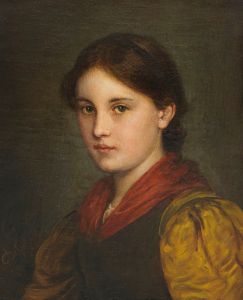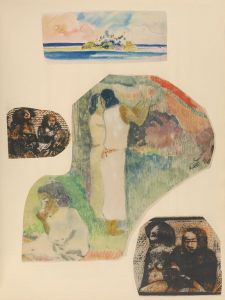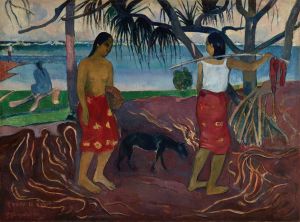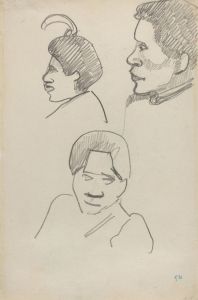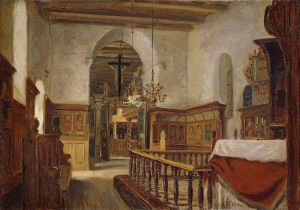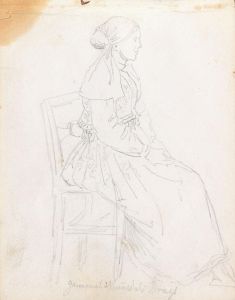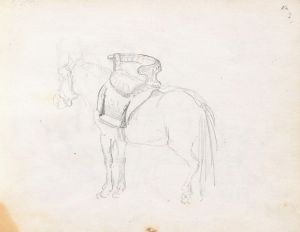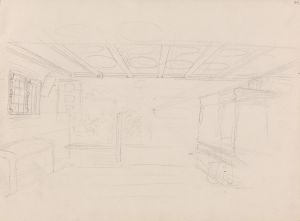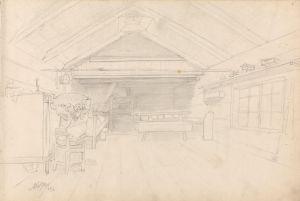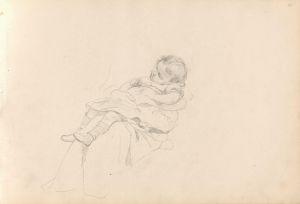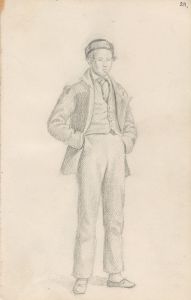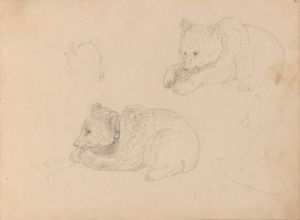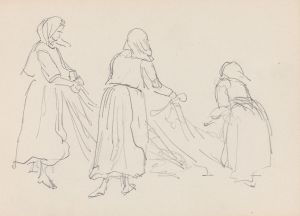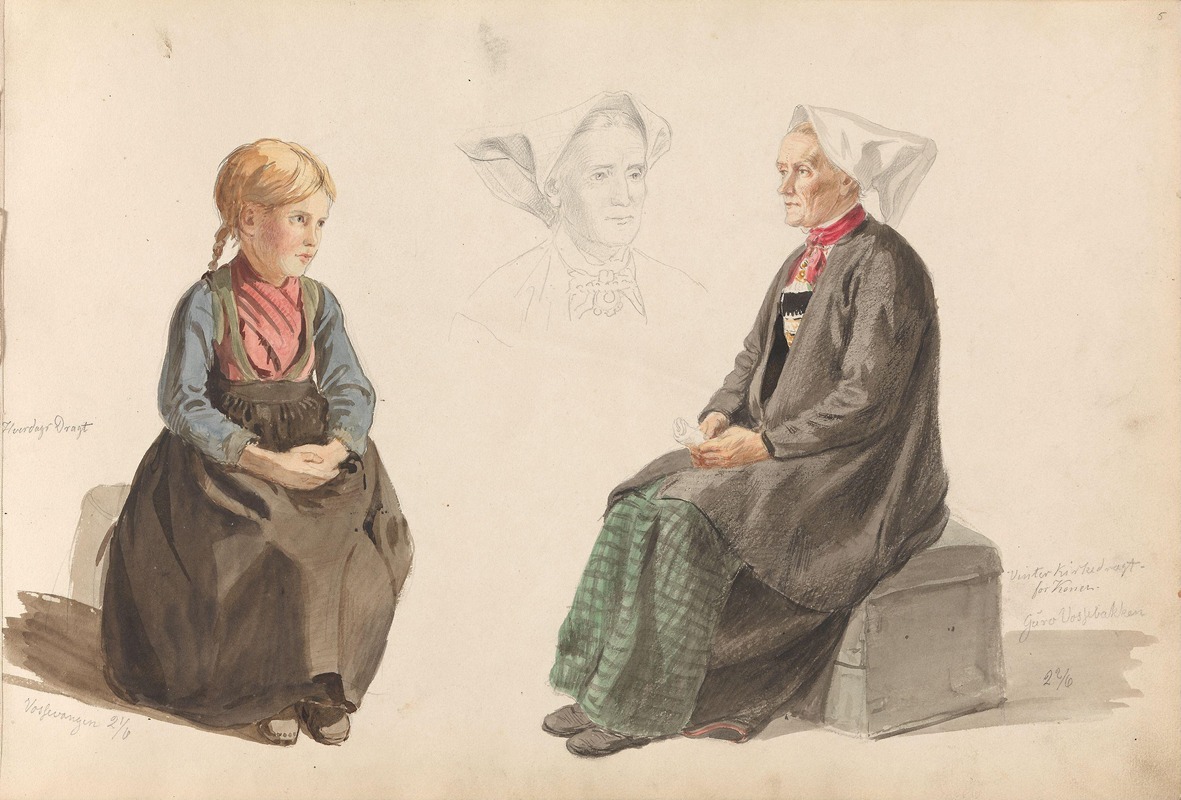
Jente i hverdagsdrakt, Voss; kvinnehode; Guro Vossebakken
A hand-painted replica of Adolph Tidemand’s masterpiece Jente i hverdagsdrakt, Voss; kvinnehode; Guro Vossebakken, meticulously crafted by professional artists to capture the true essence of the original. Each piece is created with museum-quality canvas and rare mineral pigments, carefully painted by experienced artists with delicate brushstrokes and rich, layered colors to perfectly recreate the texture of the original artwork. Unlike machine-printed reproductions, this hand-painted version brings the painting to life, infused with the artist’s emotions and skill in every stroke. Whether for personal collection or home decoration, it instantly elevates the artistic atmosphere of any space.
Adolph Tidemand (1814–1876) was a prominent Norwegian romanticist painter, known for his depictions of Norwegian folk life and traditions. One of his works, "Jente i hverdagsdrakt, Voss; kvinnehode; Guro Vossebakken," is a painting that reflects his interest in capturing the cultural and regional identity of Norway during the 19th century. The title of the painting translates to "Girl in Everyday Dress, Voss; Woman's Head; Guro Vossebakken," suggesting that the artwork features a young woman in traditional attire from the Voss region of Norway, along with a focus on a woman's head, possibly as a study or portrait.
Tidemand was deeply inspired by the rural life and customs of Norway, and he often traveled to different regions to document local costumes, traditions, and landscapes. Voss, a municipality in Western Norway, was one of the areas known for its distinctive folk costumes and cultural heritage, which Tidemand sought to preserve and celebrate through his art. His works often combined ethnographic accuracy with romanticized depictions of Norwegian life, making them both artistic and historical records of the time.
The painting is believed to be part of Tidemand's broader body of work that emphasizes the importance of national identity and cultural pride during a period when Norway was seeking to establish its own identity, separate from its union with Sweden. Tidemand's attention to detail in portraying traditional costumes and his ability to capture the character and dignity of his subjects made his works highly regarded both in Norway and abroad.
While specific details about the creation date or current location of this particular painting are not readily available, it is consistent with Tidemand's style and thematic focus. His works are often housed in major art institutions, such as the National Museum of Art, Architecture and Design in Oslo, and private collections.
Adolph Tidemand's legacy as one of Norway's most celebrated painters remains significant, and his works continue to be appreciated for their artistic merit and cultural importance.





